Bungalows
These affordable homes offer ARTS AND CRAFTS finishes and an intrinsic link to Chicago’s working-class PAST.
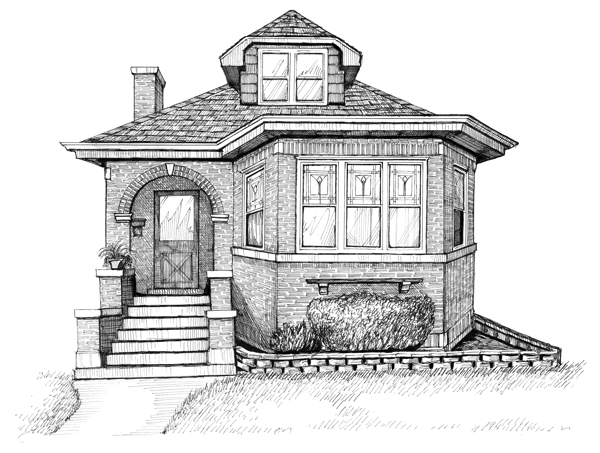
The legendary newspaper columnist Mike Royko coined the term Bungalow Man to describe a particular urban species, one that lived in the general vicinity of Milwaukee Avenue and shopped at Sears — a man with a more authentic connection to Chicago than the cosmopolitan High-Rise Man, with his membership to the East Bank Club and subscription to Chicago magazine (ahem).
Defined by sturdy construction and elegant touches like low-pitched roofs and ornamental brick façades, bungalows — most of which were built from the 1910s to 1940s — represented an elevated American dream for working-class families: They offered privacy, front and rear yards, and room to expand. Long stretches of the squat homes, with their meticulously maintained lawns and gardens, embodied Chicago’s Urbs in horto motto.
Bungalows still make up about a third — or 80,000 — of the city’s single-family houses, according to the Chicago Bungalow Association. One need only look to the outer perimeter of the city — the aptly named Bungalow Belt — for a plentiful supply.
Best Places To Buy Them
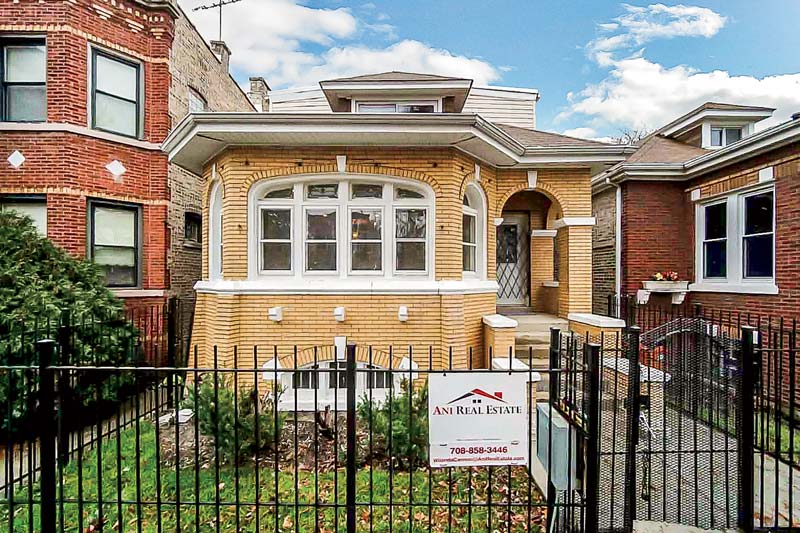
Auburn Gresham
Like nearby Chatham and Deering, Auburn Gresham has become a hotbed for flippers who see opportunity in the sprawling South Side community area’s vast stock of bungalows. Even after gut rehabs, though, houses remain within reach for working families — last year’s median sale price was $90,000. Still, it’s up a staggering 111 percent from just five years earlier.
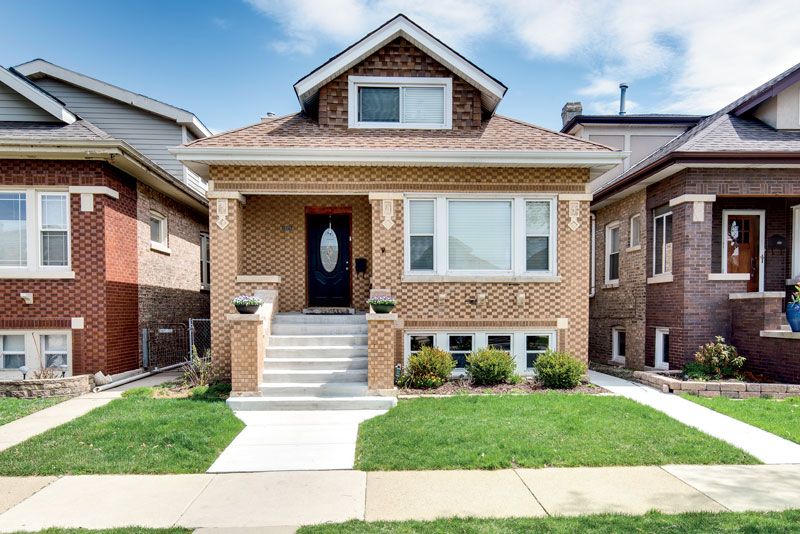
Berwyn
True to its working-class roots, this inner-ring western suburb’s housing costs have stayed relatively low compared with neighboring Oak Park and Riverside. But a humble budget doesn’t necessarily translate into a pintsize house: $350,000 buys a renovated five-bedroom bungalow. In recent years, Berwyn has spent a small fortune hyping itself to younger buyers as a hip “handcrafted community” that’s “nothing like a suburb.” But for every buzzy restaurant like Autre Monde, you’ll find a kitschy retro bowling alley. In other words, despite the rebranding, it’s still (mostly) your grandpa’s Berwyn, and that’s OK.

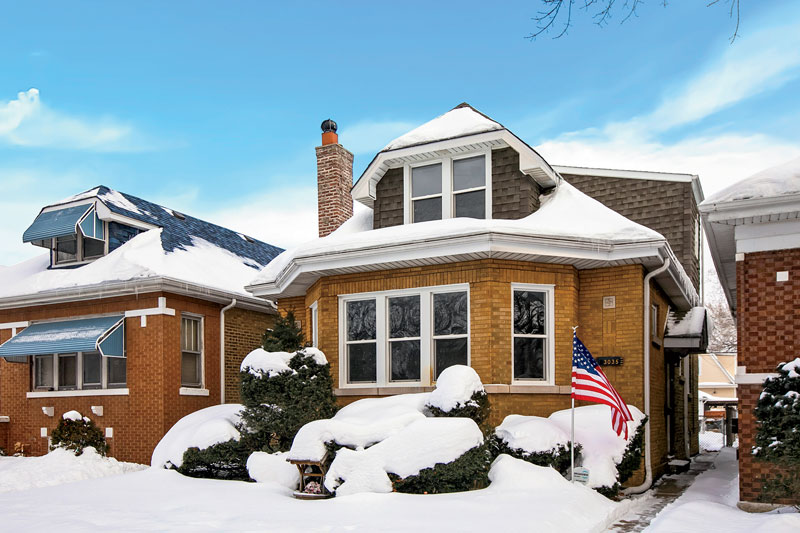
Hermosa
In February, 350 homes in this Northwest Side neighborhood — most of them bungalows — were added to the National Register of Historic Places. No wonder: The bungalows in Hermosa are among the best preserved in the city. The designation means that owners can apply for financial incentives to maintain that character — and would-be rehabbers can still update a house without any extra interference. While prices in the neighborhood remain modest, the median ($255,000 in 2018) has increased by 80 percent over the past five years.
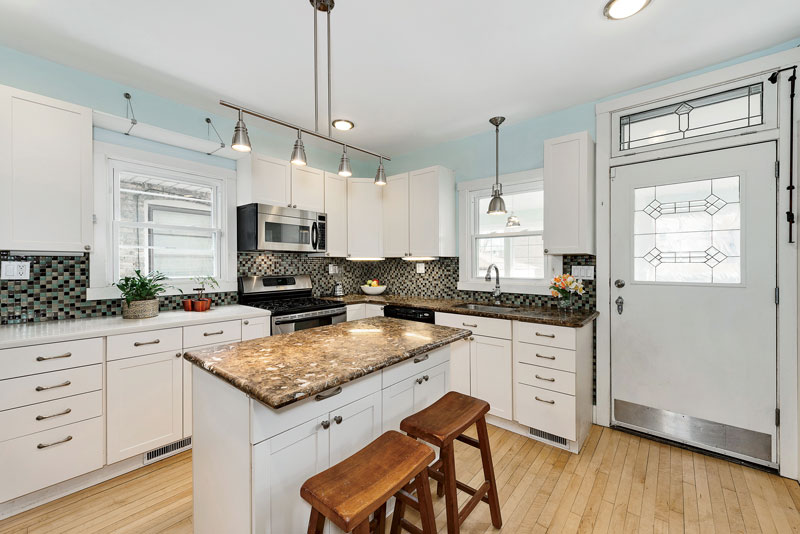
Portage Park
Home values here have risen steadily in recent years as buyers move northwest along Milwaukee Avenue from nearby Logan Square and Irving Park. The median sale price for houses soared from $210,000 in 2013 to $320,000 in 2018. The abundant, well-maintained bungalows have been a consistent draw for young families, even as Six Corners, the main commercial corridor, struggles to reinvent itself. (It was home to the last Sears in the city, which closed in July 2018.) Buyers should expect to pay around $250,000 for a fixer-upper and $400,000 for a thoroughly updated home.
Greystones
mansions for the rest of us, they have an only-in-Chicago moniker and highbrow curb appeal.

The Chicago greystone, named for the slate-colored Bedford, Indiana limestone covering its façade, could be summed up as an aspirational palace for the Everyman. When the style first rose in popularity, in the late 19th century, Victorian flourishes carved into the heavy stone were intended to signal high-quality craftsmanship and long-lasting quality. Even with those elegant touches, the mini manses were designed to be duplicated on a large scale. They were built en masse throughout Chicago between 1880 and 1910, largely thanks to the city’s robust rail network, which created a direct connection to the limestone source near Bloomington, Indiana. Builders also employed crafty, cost-cutting engineering methods like using regular brick for the rear and sides.
The greystone could be viewed as Chicago’s response to the Brooklyn brownstone. Both are characterized by the use of local materials, and the greystone, like its East Coast cousin, comes in a wide variety of shapes and sizes, ranging from small single-story residences to majestic mansions. Two- and three-flat greystones are particularly common, making these architectural gems accessible to middle-class families.
Best Places To Buy Them
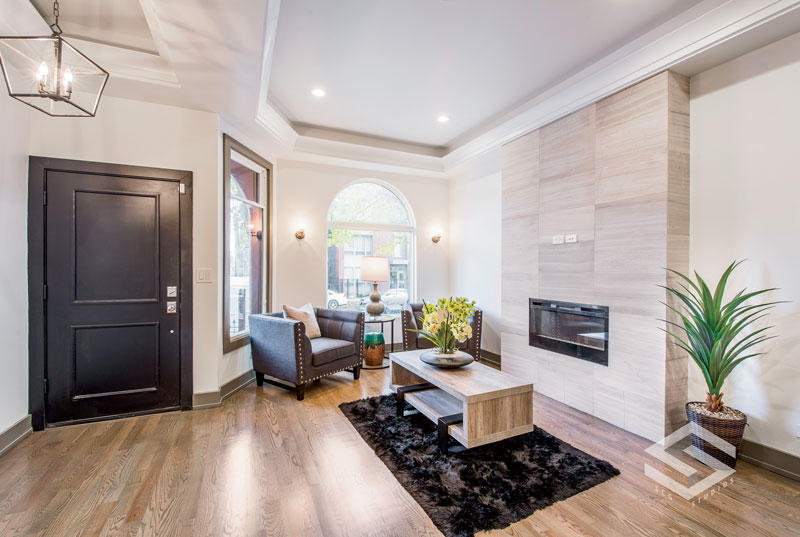
Grand Boulevard
The sheer abundance of majestic limestone-clad homes on South King Drive is impressive. So are the values to be found: A fully refreshed row house won’t cost more than $500,000 — less than half what you’d pay on the North Side. After decades of disinvestment, new housing and shopping options are popping up in the area, too. And the neighborhood is just five miles south of the Loop and accessible by three Green Line stations.

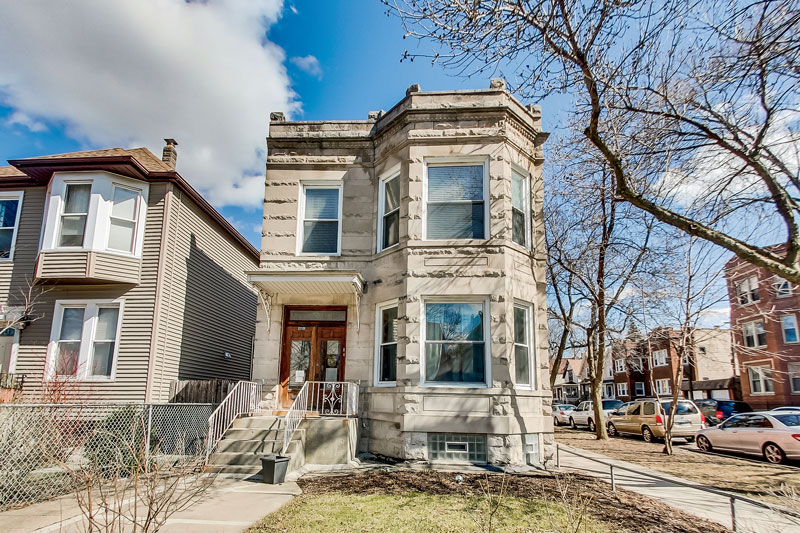
Logan Square
The grand mansions along tree-lined boulevards are a main reason — along with a booming dining scene and easily accessible public transportation — that Logan Square has exploded in popularity in the last decade. Expect steep prices in the most coveted locations: Handsomely renovated greystones, converted from two-flats to single-family homes, often push well beyond $1 million (especially in a premium boulevard location), though a unit in an aging building that’s still carved up into multiples can be had for under $700,000.
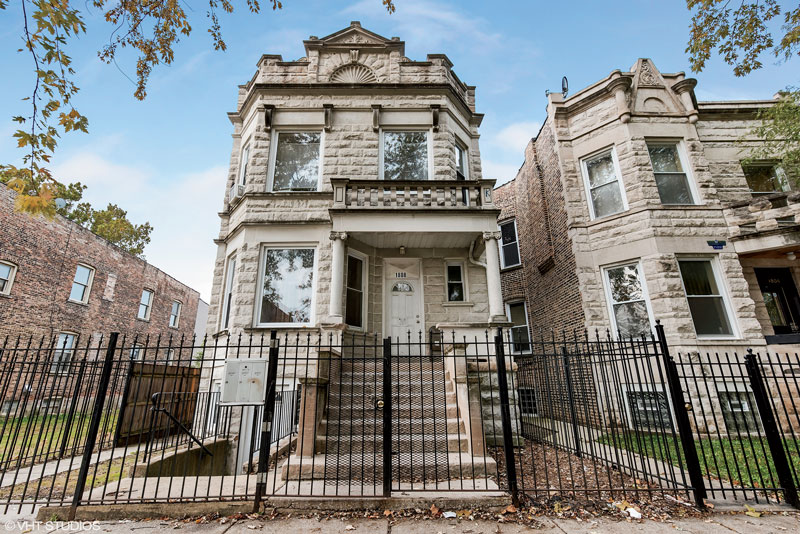
North Lawndale
It’s widely believed the highest concentration of greystones in the city can be found in this West Side community area — and that’s not by chance, considering its roots as an enclave of upwardly mobile immigrant workers, as well as its proximity to the limestone-carrying rail lines. After decades of deindustrialization and depopulation in North Lawndale, the city enacted an aggressive policy of razing vacant properties. More recently, neighborhoodoriginated initiatives like the Chicago Greystone and Vintage Home Program, which ended last year, have averted demolition by preserving historic housing through financial assistance and rehab advice. The median price for single-family houses in the neighborhood was just $87,000 last year, but that’s up a striking 30 percent from 2017 — an increase spurred in part by the redevelopment of the old Sears, Roebuck complex as a community center and the opening of the20,000-square-foot Farm on Ogden.
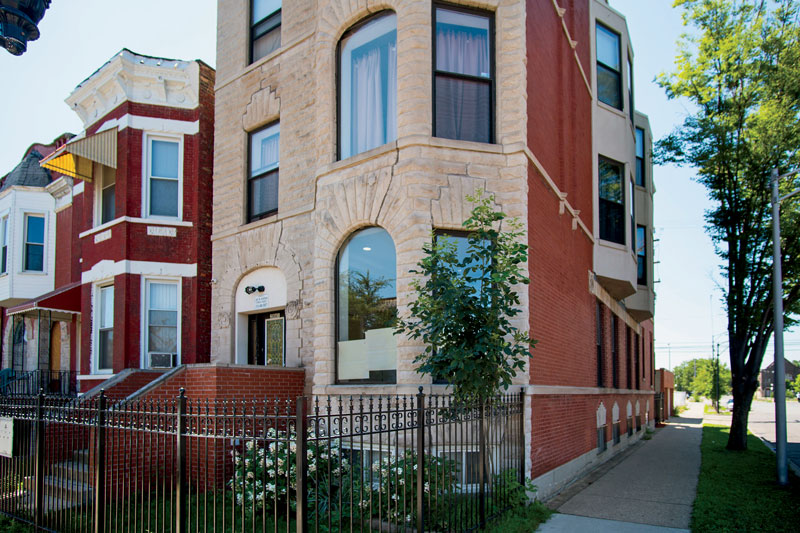
West Garfield Park
This West Side community area boasts a dense grid of stately but humbly priced stone-clad houses that run anywhere from $60,000 to $250,000, depending on the level of renovation you’re willing to do. The median sale price for single-family houses overall was just $62,000 last year, but that’s up 17 percent from 2017 and a whopping 103 percent from 2013. Spillover from neighboring Humboldt Park and the West Loop has sparked a wave of speculative investment in gut rehabs. A planned Green Line station at Damen and Lake and the Hatchery, a $34 million food incubator, have engendered an optimism that will continue to spark interest in the area.
Workers’
Cottages
These Lilliputian homes served as a step up from tenement living for Chicago’s turn-of-the-century immigrants.
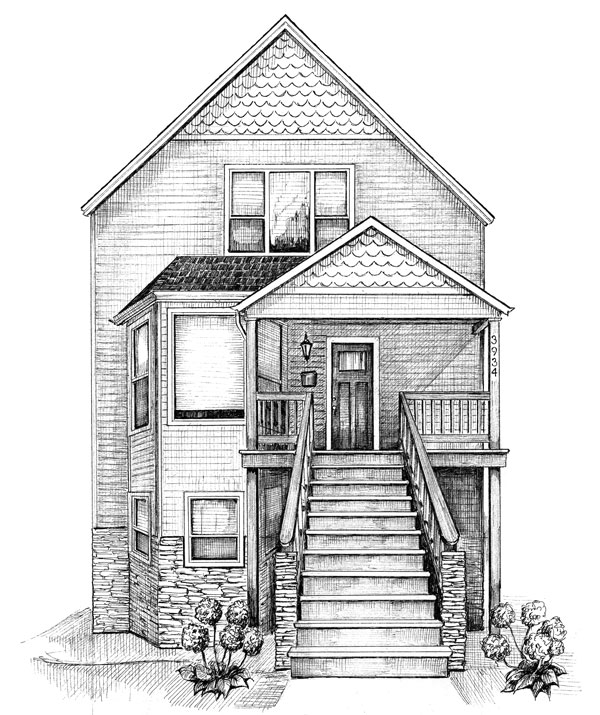
In historically blue-collar and immigrant neighborhoods throughout the city, detached single-family workers’ cottages can be spotted standing among simple two-flats and other similarly affordable housing types. Predecessors to the bungalow, the cottages are modest in size — most come in under 1,500 square feet — but also dignified and aspirational in their variety of configurations, as well as their range of ornamentation, from Victorian to Italianate. These homes flourished particularly in the so-called burnt district, as communities quickly rebuilt in the expanse of central Chicago destroyed in the fire of 1871.
Though the cottages are decidedly compact compared with, say, a modern townhouse, they were viewed as a step up from the squalor of tenement life, providing families with privacy and enough space to cook, clean, and sleep comfortably. Otherwise, everyday life — work and play — took place outside of the home. These days, they’re a good starter house for a young couple that spends more time out and about than lounging around.
Best Places To Buy Them
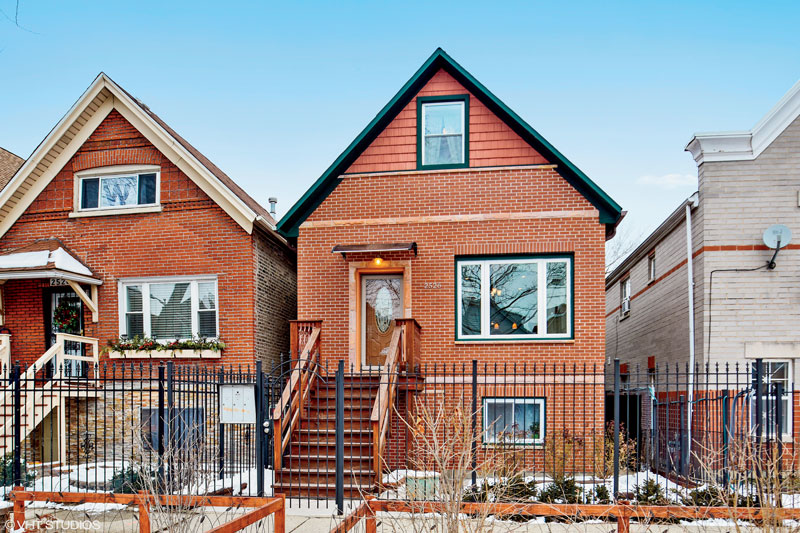
Humboldt Park
Brick cottages (along with some stately greystones) line the blocks surrounding this West Side neighborhood’s eponymous park of 200 serene acres with a lagoon, conceived by noted architect William Le Baron Jenney and later overhauled by Prairie school landscape architect Jens Jensen. But it’s the neighborhood’s proximity to the hot markets in Ukrainian Village, Wicker Park, and Logan Square that has led to rising prices in the postrecession years. Between 2013 and 2018, the median sale price for detached homes in the community area tripled, going from $64,500 to $193,000. A fully rehabbed cottage runs about $400,000, while an unrenovated one can be found for half that.

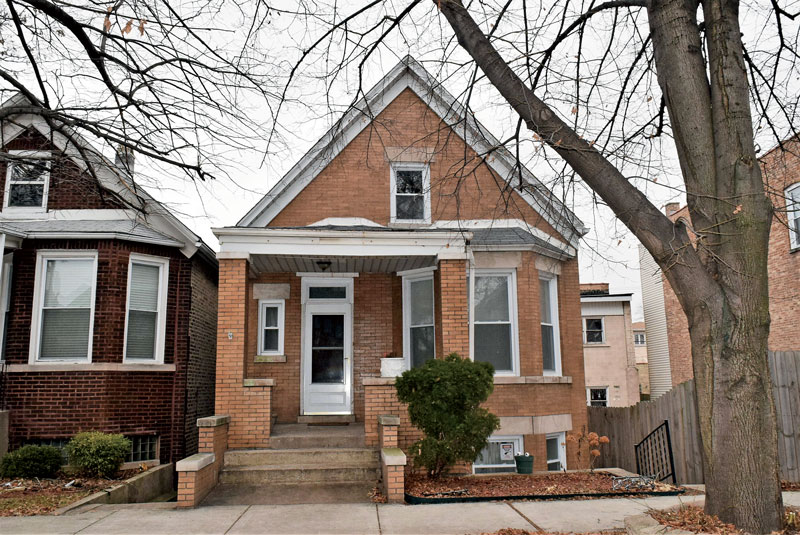
McKinley Park
This Southwest Side neighborhood is like a time capsule filled with wellpreserved blocks of lovingly maintained cottages. The area’s housing stock is noted for being within reach of working families — at least for the time being. Just this year, Redfin deemed McKinley Park one of the nation’s hottest affordable neighborhoods, surely due in part to all the attention it’s getting from buyers who have found themselves priced out of neighboring Bridgeport. A budget of $250,000 gets a cozy fixer-upper cottage, while $350,000 can buy a fully renovated one.
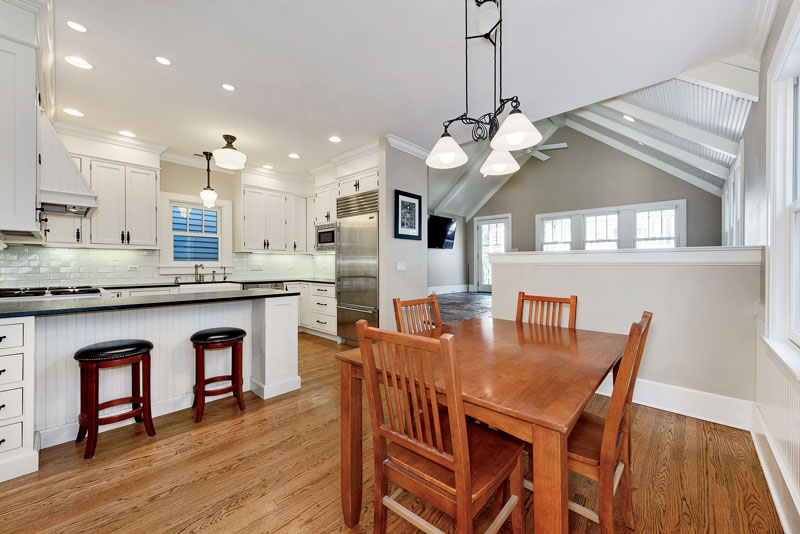
Old Town
The small wood-frame cottages in this North Side neighborhood served as relief housing for the thousands of residents displaced by the Chicago fire. In recent years, though, these diminutive houses have been in danger of being torn down as the area has become denser. (It’s not unusual to see a lone pintsize home set against a backdrop of looming highrises.) But charm comes at a price for prospective buyers: Since freestanding houses are so hard to come by here, the cottages routinely list for well over $1 million.

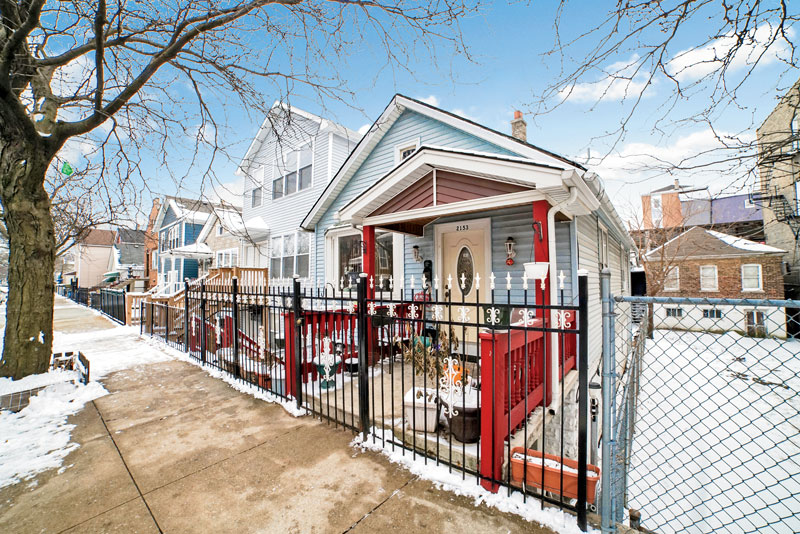
Pilsen
Brightly colored murals cover viaducts and alleyways in this bustling Southwest Side neighborhood known for its rich Mexican American heritage. Also colorful? The vinyl-, brick-, or Permastone-clad workers’ cottages that line its residential streets. Many homes feature front doors below street level, a relic of the era before the city raised itself, block by block, to create room for the underground sewer system. To honor Pilsen’s vernacular housing stock, the Commission on Chicago Landmarks has identified a collection of 850 buildings as candidates for a planned historic district for the neighborhood. While Pilsen’s reputation for affordability is being tested as new developments sprout up, you can still find cottages, albeit ones that need updating, for around $300,000.
Prairie-Inspired Mansions
Oak Park is just one place to find ample stock of Chicago’s most famous contribution to the architectural canon.
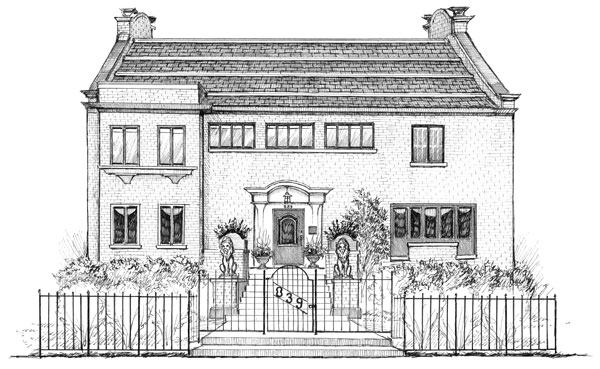
The Prairie school, widely considered to be the first truly American form of residential architecture, was born in the Chicago area. It was in Oak Park that a young Frank Lloyd Wright built his home and studio and fleshed out his early design principles — a philosophy that sought to integrate houses with their natural surroundings instead of distract from them.
A dramatic departure from the trends of the Victorian era, which favored ostentatious elements such as towering turrets and gingerbread-style adornments, the Prairie school celebrated long and flat rooflines, earthy colors, and frill-free façades. The homes included upscale creature comforts like electric lighting and carefully thought-out floor plans that favored movement and flow.
And while Prairie homes were strikingly modern for their day, the dark, compartmentalized interiors are a stark contrast to the current trend of open floor plans and bright white interiors. Since these are one-of-a-kind homes, ownership can be more challenging than with simple, fuss-free new construction. (Art glass windows aren’t exactly an off-the-shelf product if you need to replace one.) However, for many buyers, particularly those with a fondness for architecture and design, Prairie school residences are nothing short of dream homes.
Best Places To Buy Them
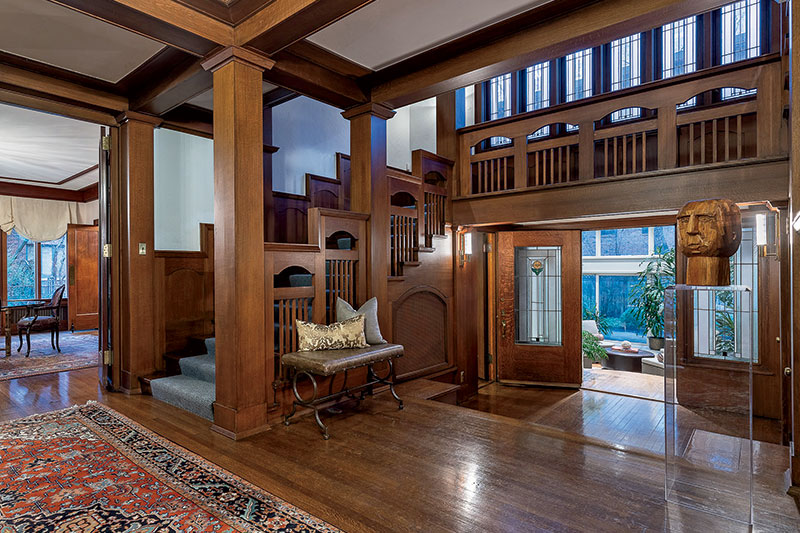
Buena Park
This North Side neighborhood’s Hutchinson Street District is a pocket of broadshouldered old mansions with large, landscaped yards, hidden just west of the high-rises lining North Lake Shore Drive. You’ll find numerous works by the illustrious Prairie school architect George W. Maher in the suburban-like enclave, which was built during the early 20th century. These coveted homes are a unique option for well-heeled city buyers, providing the luxuriousness of mansion living near the lakefront. But with listings in the multimilliondollar range, they can be just as exorbitantly priced as similar properties in tony North Shore suburbs.

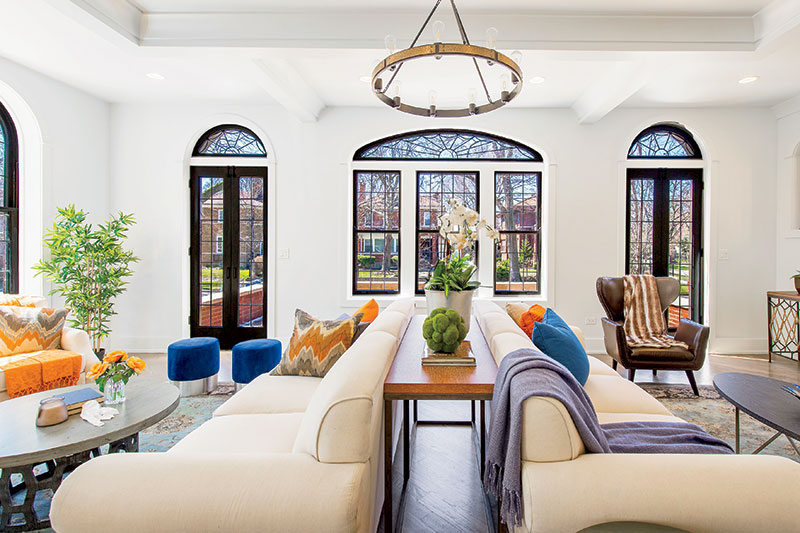
Jackson Park Highlands
Prices for the stately Arts and Crafts mansions in this 16-block neighborhood within South Shore might surprise buyers: The most expensive single-family home sale in years was a six-bedroom manse that closed for $975,000 last summer, well below what a similarly sized house would cost on the North Side. (No wonder such houses rarely come on the market and are snapped up quickly when they do.) That kind of value might be harder to come by soon, with the arrival of the Obama Presidential Center in neighboring Woodlawn and the makeover of the adjacent Jackson Park Golf Course. Thanks in no small part to the buzz around those developments, the median price in the wider South Shore community area nearly tripled between 2013 and 2018.
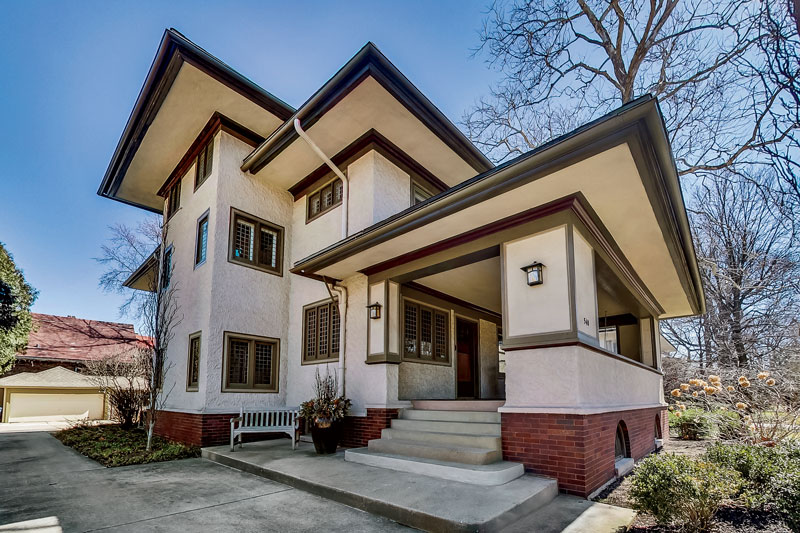
Oak Park
This western suburb might be best known as the hometown of Frank Lloyd Wright, who designed or renovated 25 structures there, but he’s not the only Prairie school architect who left his mark. An astounding 1,700 historic buildings fall within the city’s Frank Lloyd Wright– Prairie School of Architecture Historic District — nearly half of which are inspired by the style. Masterful examples of these houses can cost more than $1 million, though budgets between $600,000 and $800,000 are more than adequate for a solid Prairie-inspired home.
Two-Flats and Three-Flats
These ubiquitous dwellings are the building blocks of the Chicago we know today.
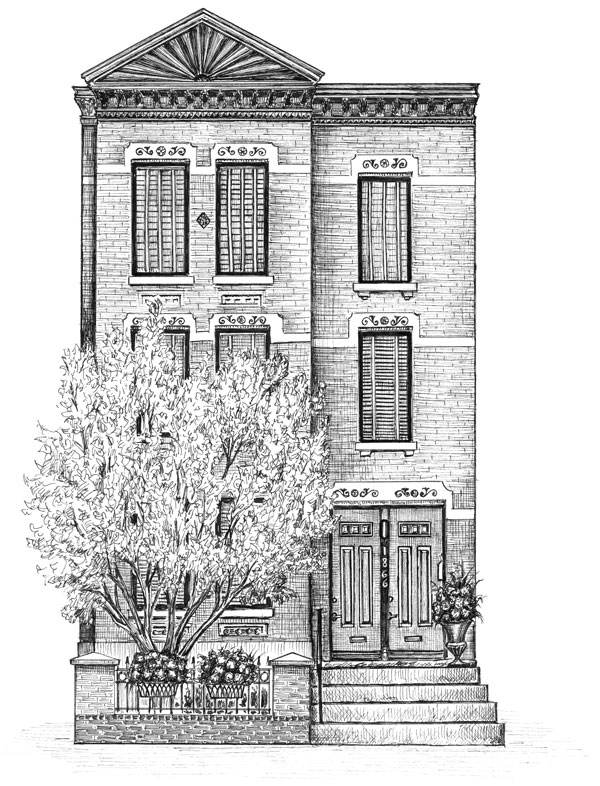
If necessity is the mother of invention, then thank Chicago’s dramatic population boom between the fire of 1871 and the 1933 world’s fair — a period that saw the arrival of nearly three million new residents — for the multifamily flat. The innovation of balloon-frame construction allowed housing to be easily built, enabling developers to cram blocks with homes to keep up with the influx.
Noted for their bay windows, steeply pitched roofs on the wood versions (gently, if brick), and simple floor plans, multiunit residential flats were seen as a path to the American dream — an opportunity to build equity and achieve financial security through rental income, with the homeowner living on one floor and tenants living on the others. This isn’t to say that these practical structures weren’t well conceived or well constructed. Be they wood frame or brick, they remain one of the most durable, most economical, and most pervasive housing types in Chicago.
As recently as 2012, two-, three-, and four-flats represented the most plentiful residential form in the city, according to a report from the Institute for Housing Studies at DePaul University. But as housing trends change, these dependable buildings are often targeted for demolition or conversion into single-family homes, particularly in quickly appreciating North Side communities. The postrecession construction explosion has been a large reason for the drastic decline in Cook County, which lost more than 26,000 units in flats from 2012 to 2017.
Best Places To Buy Them
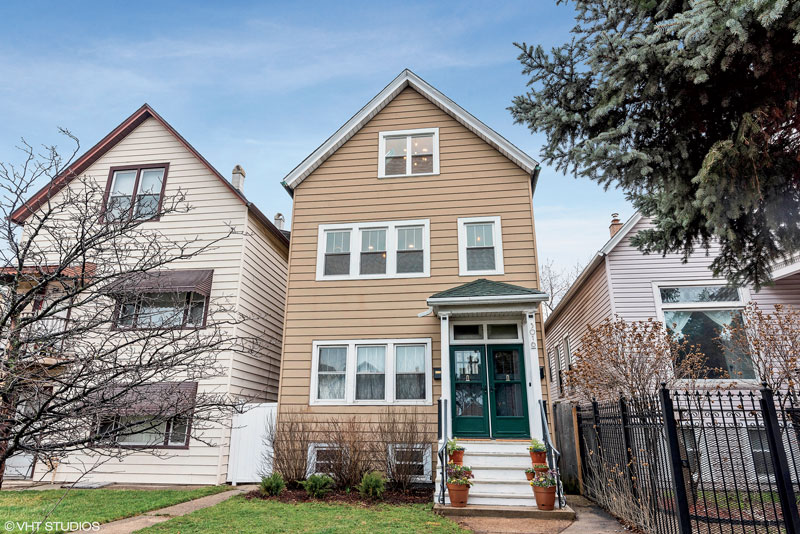
Avondale
Described as the “neighborhood that built Chicago,” Avondale has managed to maintain a reputation as a manufacturing hub since its earliest years. It’s that working-class history that has allowed much of the Northwest Side enclave’s wood-frame inventory to remain largely intact and affordable. As gentrifying Logan Square’s neighbor, though, the area has experienced a “halo effect” in housing prices as younger, more-affluent residents continue to push northwest along the Blue Line. The community area’s median sale price for single-family houses shot up 63 percent, to $504,000, from 2013 to 2018.
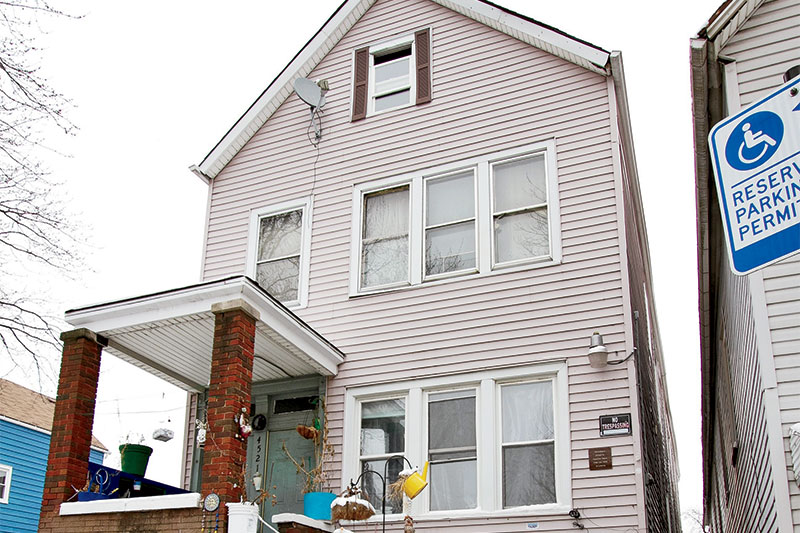
Back of the Yards
Lacking in ornamental embellishment, this South Side neighborhood’s basic flats were built for a singular purpose — housing the butchers and meatpackers of the nearby Union Stock Yards, which closed in 1971 — and the homes remain affordable to this day. Fixer-upper two-flats are readily available for under $100,000.
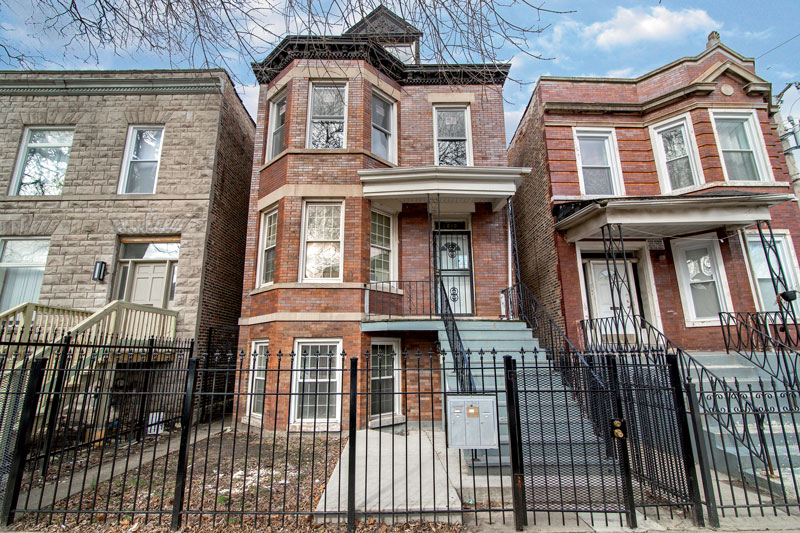
Little Village
This West Side neighborhood boasts a vast inventory of densely packed two- and threeflats. A budget of $250,000 is more than enough to pick one up, though the story could change in coming years as rising demand and housing costs in neighboring Pilsen encourage buyers and speculative investors to look farther west. Trendy new tenants — including Lagunitas Brewing Company and Cinespace Chicago Film Studios — have helped triple the surrounding community area’s median sale price since 2013.
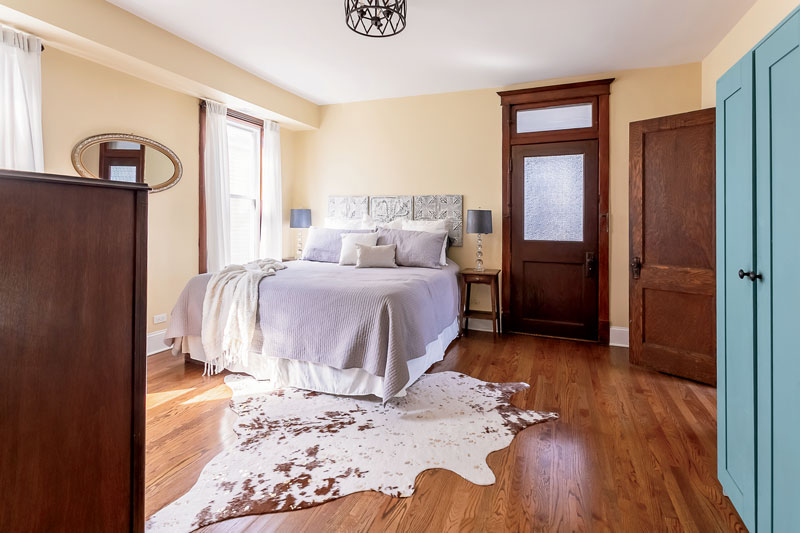
North Center
North Center is ground zero for the destruction of existing two- and three-flats for flashier new construction. The community area’s aging wood-frame structures are more often than not viewed as an opportunity for redevelopment, rather than renovation. (Nearly 400 demolition permits were issued in North Center between 2013 and 2016, according to the zoning and development research database Chicago Cityscape.) That said, you’ll still find a plenteous supply of well-maintained, move-in-ready brick multiflats, though they’ll cost you. The median sale price for houses here last year was just over $1 million.
Modernist High-Rises
The most iconic Chicago towers deliver it all, from brilliant lake views and swanky addresses to their own post offices and grocery stores.
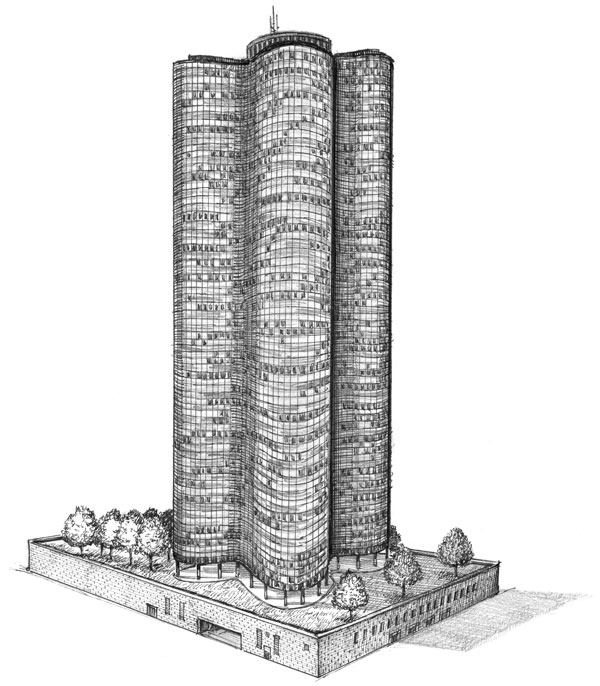
The modernist movement — led by Ludwig Mies van der Rohe, who came to Chicago from the Bauhaus in Germany — marked the rebirth of the skyscraper in the city that invented it. His “less is more” philosophy signaled the end of the whimsical flourishes and ornamentation favored by the Chicago school (Louis Sullivan, Daniel Burnham, and the like) and helped usher in a new era of minimalism: strong vertical lines, exposed steel exoskeletons, and lots and lots of glass. Inside, the units featured open floor plans (think Don Draper’s swinging, party-ready bachelor pad in the later seasons of Mad Men) and abundant natural light. Primarily found along the lakefront, these soaring structures also represented a different type of postwar city living that included sweeping skyline views, ample services, and excellent transit access.
With their hundreds of units, midcentury towers are the manifestation of the futuristic “city within a city” ethos, which envisioned buildings that incorporate every amenity — a dry cleaner, convenience store, sky-high pool — urbanites need to live comfortably. (The building formerly known as the Hancock even has its own polling place just for homeowners on Election Day.) Despite the architectural significance and plentiful creature comforts, entry-level prices don’t exclude budget-conscious buyers. Read the fine print, though: Steep monthly assessments can offset initial savings.
Best Places To Buy Them
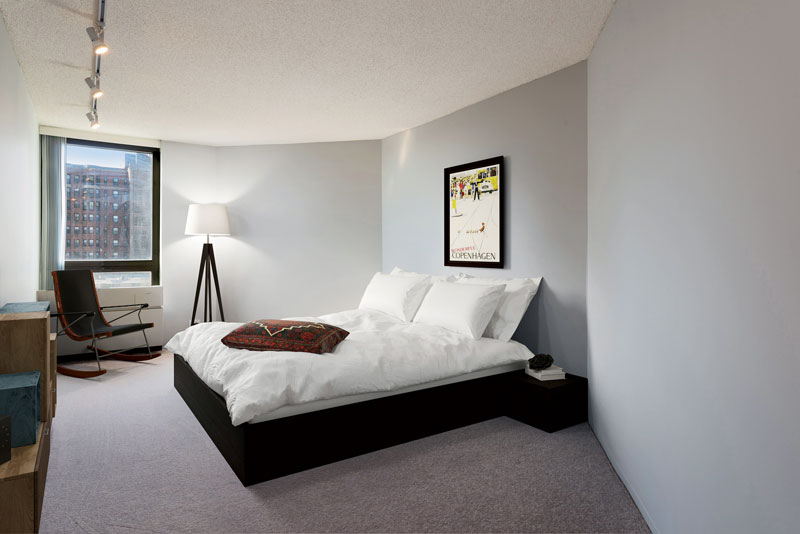
Edgewater
The vast collection of aging midcentury towers in this Far North Side lakeside community area means there’s never a shortage of well-cared-for apartments on the market, reducing competition and stabilizing the cost of living. (It’s also part of the reason Edgewater is one of the city’s most densely populated areas.) Last year’s median sale price for condos was just $205,000 (down 6 percent from the year prior), a bargain considering the dramatic Lake Michigan views.
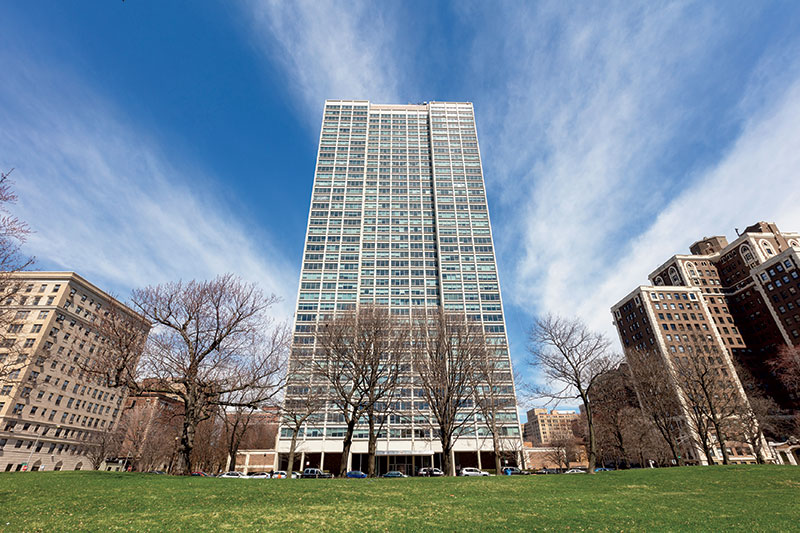
Hyde Park
From Daniel Burnham’s “White City” to Frank Lloyd Wright’s Robie House to Jeanne Gang’s Solstice on the Park, there is architectural history and design pedigree on seemingly every corner in Hyde Park. Another thing of beauty? The prices for homeownership in a midcentury high-rise. Just $150,000 is enough to buy a spacious, and nicely outfitted, two-bedroom in a vintage building like University Park Condominiums, Cornell Village, or the Promontory Apartments, which were designed by Mies van der Rohe himself. Monthly assessments generally cover amenities such as gyms and, in some buildings, indoor pools. Don’t count on financing for co-op units, which are generally cash-only deals in buildings that require buyers to be owner-occupiers.
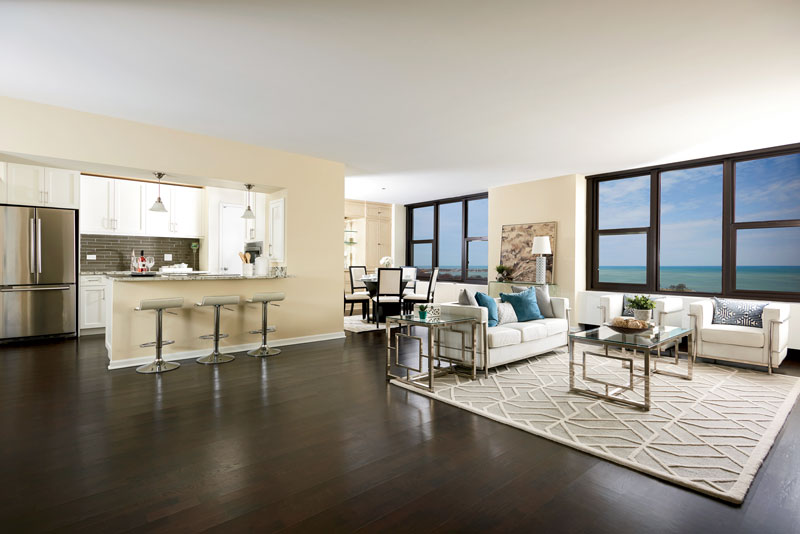
Lakeview
Lake View remains consistently in demand, but its abundance of modernist towers along the lakefront keeps condo prices relatively affordable. Prepare to either spend at least a few hundred thousand (the 2018 median sale price for condos in general in this area was $370,000) or put in considerable elbow grease for DIY improvements. Pro tip: Avoid older buildings in need of extensive façade treatments, elevator upgrades, and other major structural overhauls because they may carry costly monthly assessments — $1,000 and higher on small units isn’t unheard of.
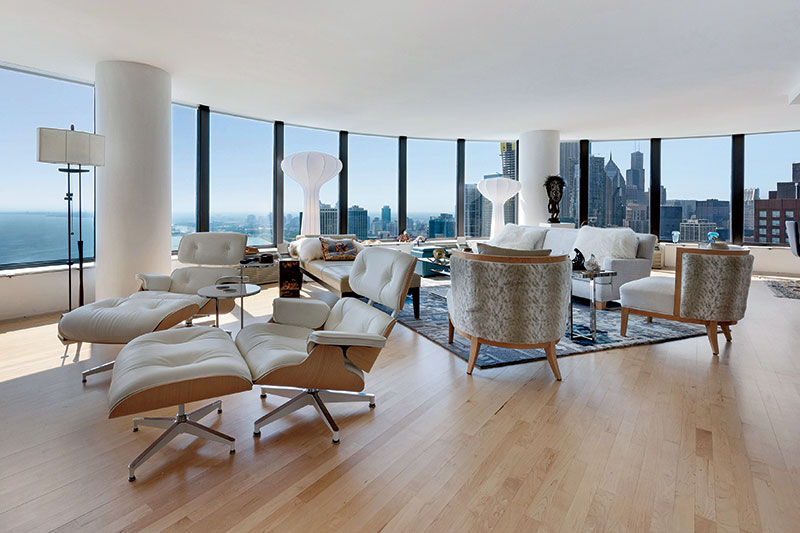
Near North Side
The cluster of neighborhoods that make up the Near North Side — River North, Streeterville, and the Gold Coast — feature many of Chicago’s most famous modernist skyscrapers. To name a few: 875 North Michigan Avenue (the old John Hancock Center), Water Tower Place, 860–880 North Lake Shore Drive, and the landmark Marina City. The cost of a studio or small one-bedroom in many of these buildings is surprisingly modest — only a couple of hundred thousand dollars. An upper-level penthouse, however, will set you back millions. (That should come as no surprise, given that one of those penthouses — in Water Tower Place — has “Oprah slept here” bona fides.) Fans of retro interiors will have the best luck at Marina City, where mint-condition midcentury apartments frequently appear on the market. But the best views are at Lake Point Tower, the lone skyscraper east of Lake Shore Drive. Eye-watering downtown property taxes and homeowners’ association dues often mean monthly assessments in the thousands for larger condos.

The latest price data for 75 neighborhoods and 239 suburbs
Select Which Data to View
You can also click on the top of each column to sort by that value.


